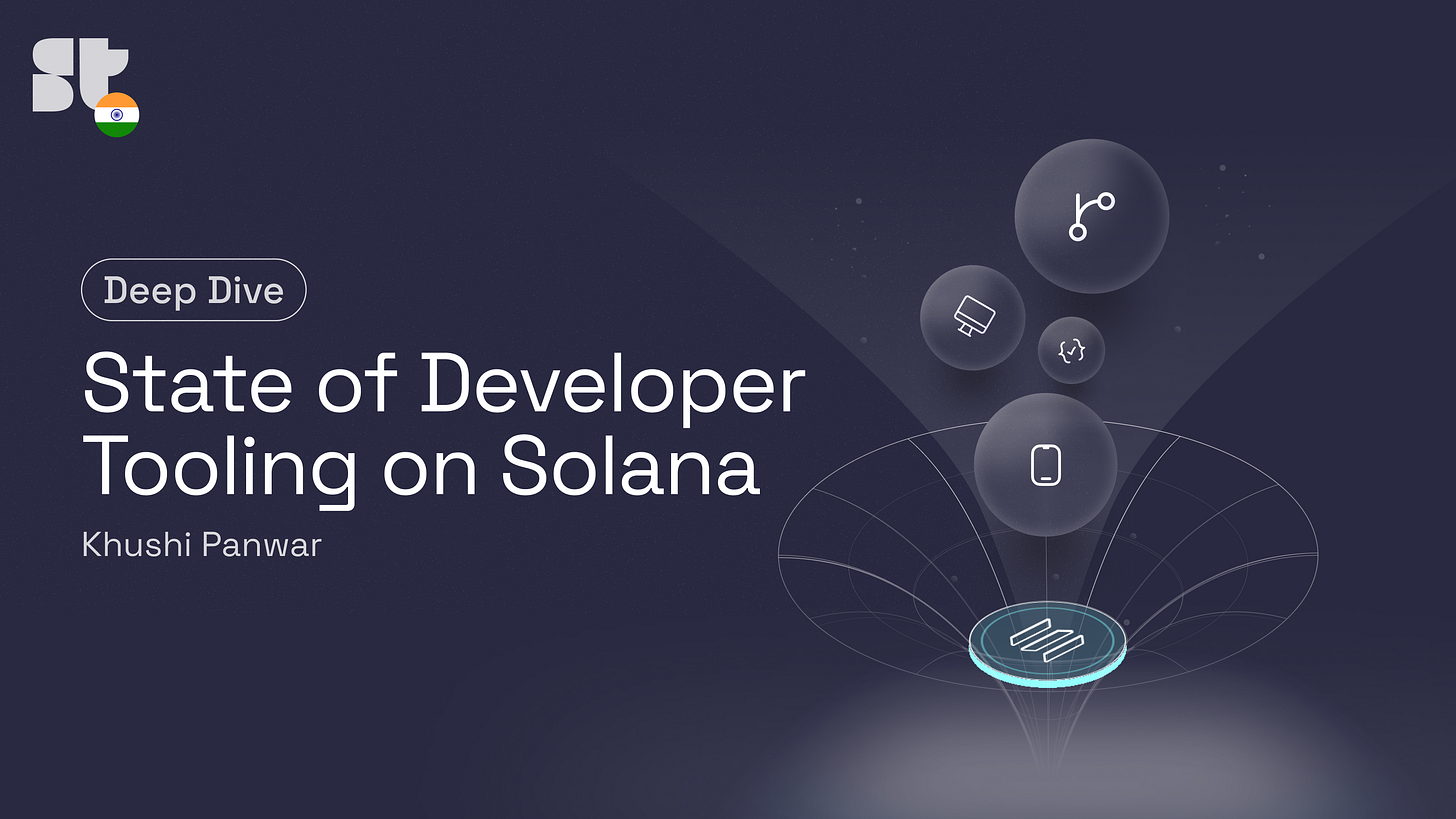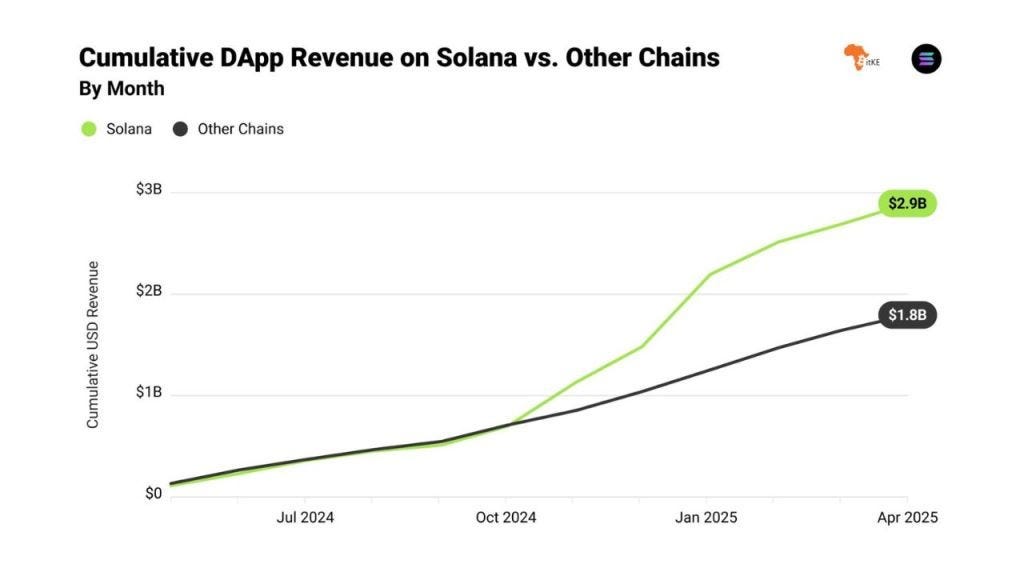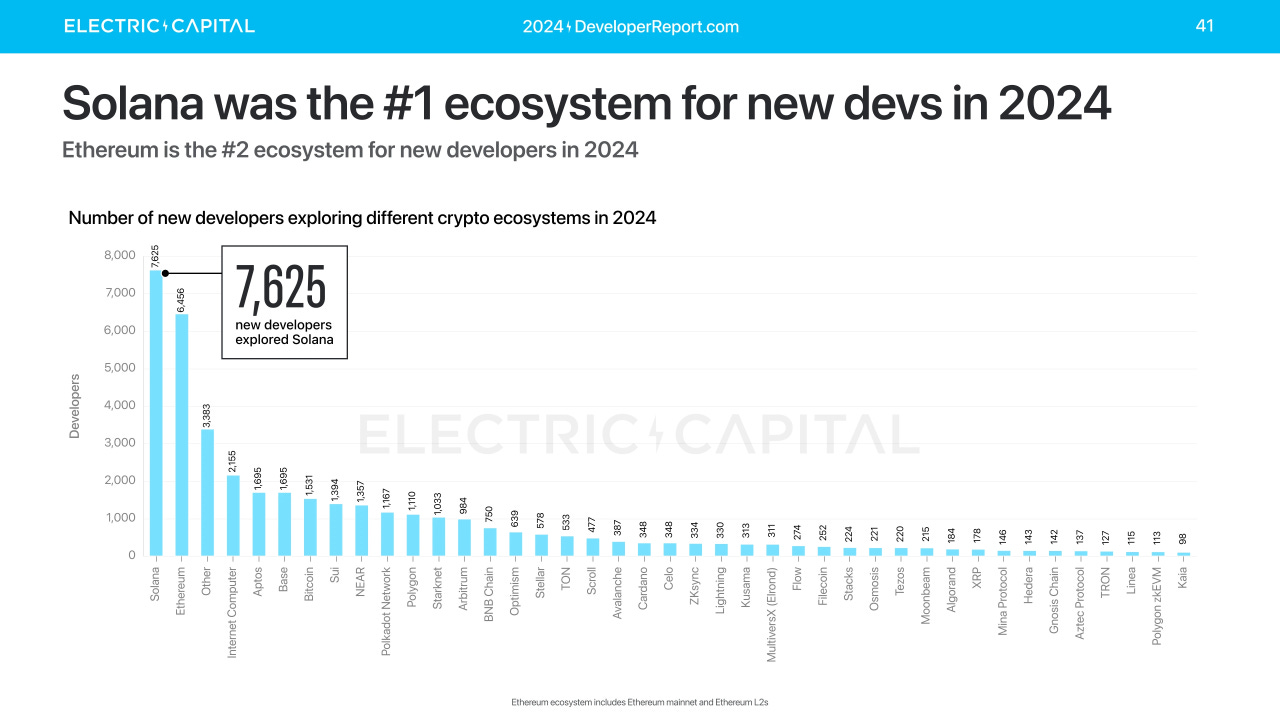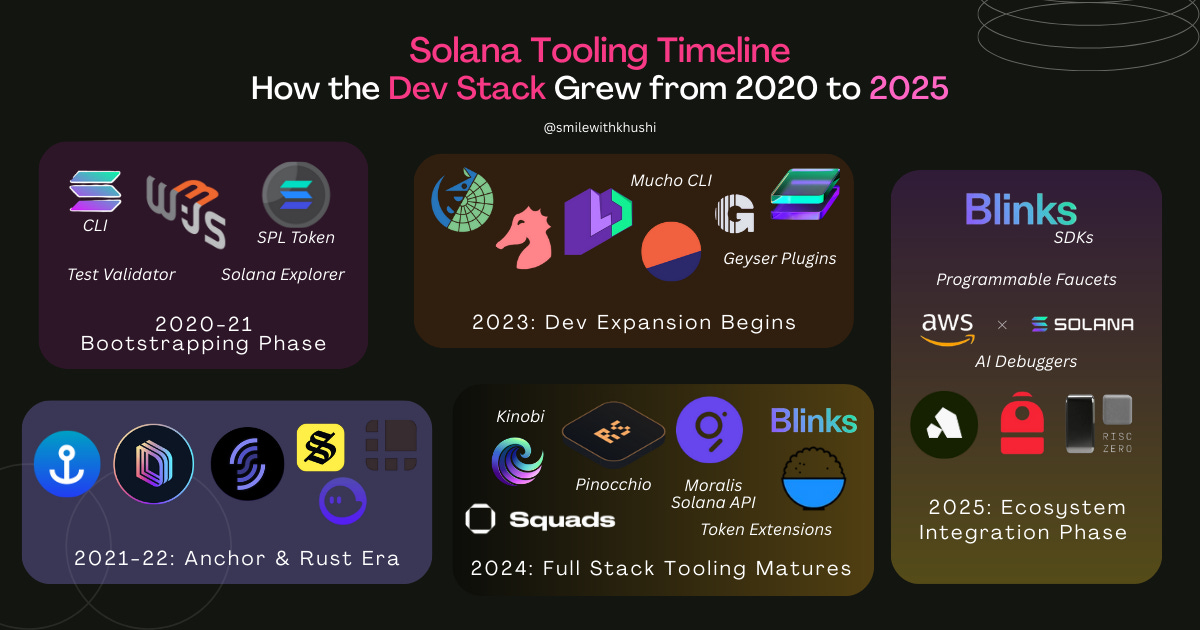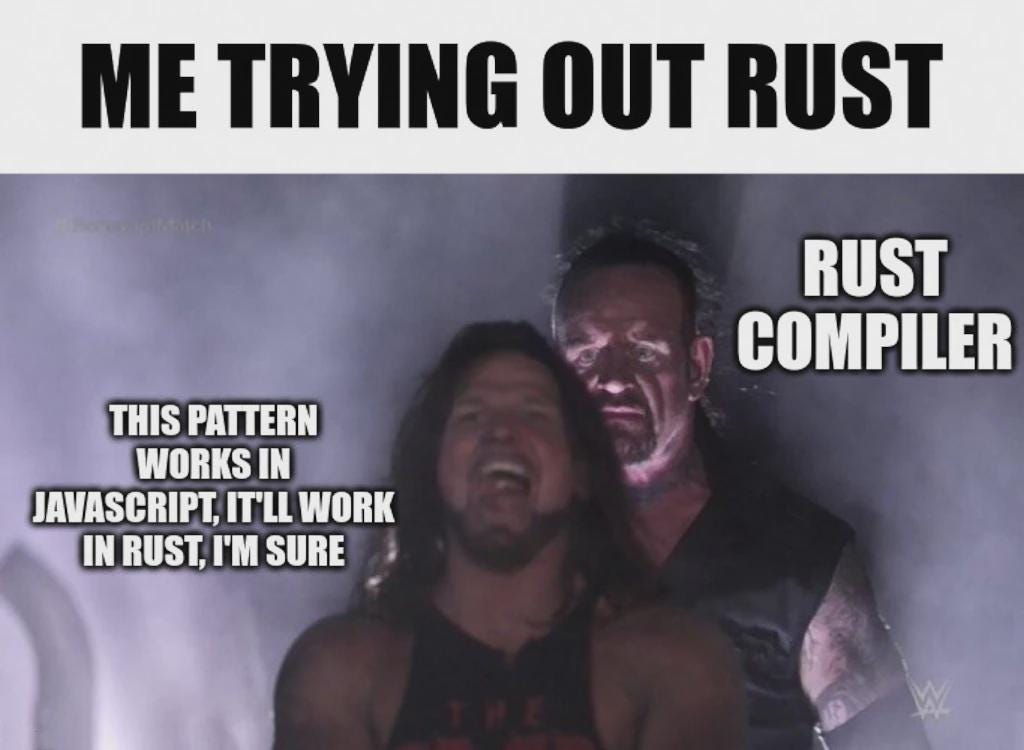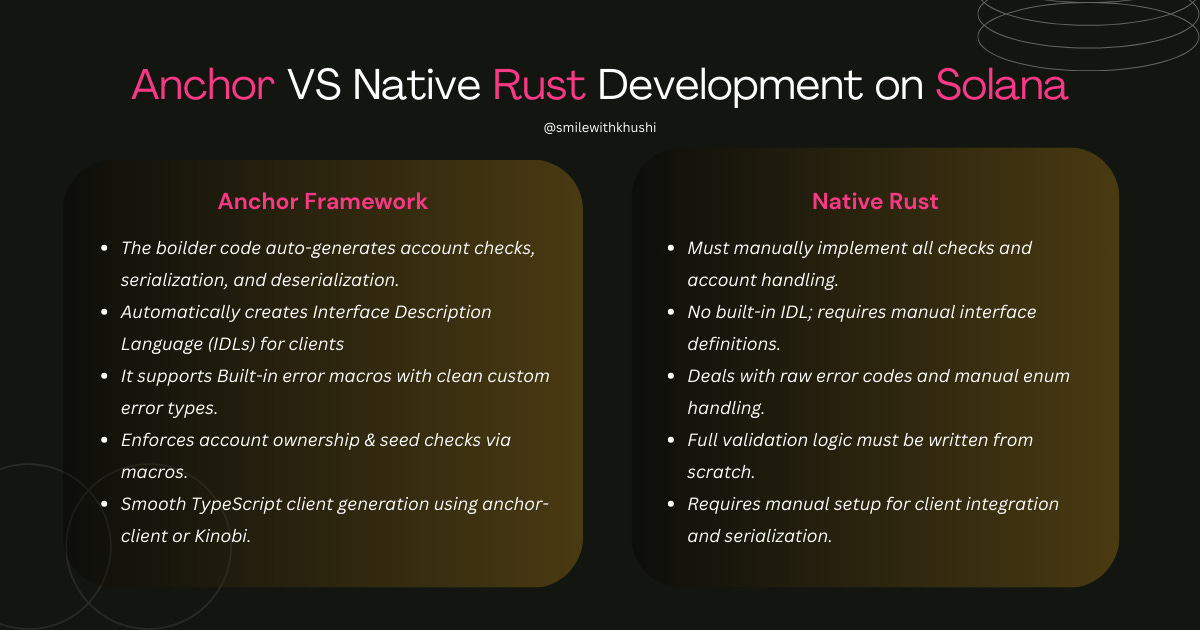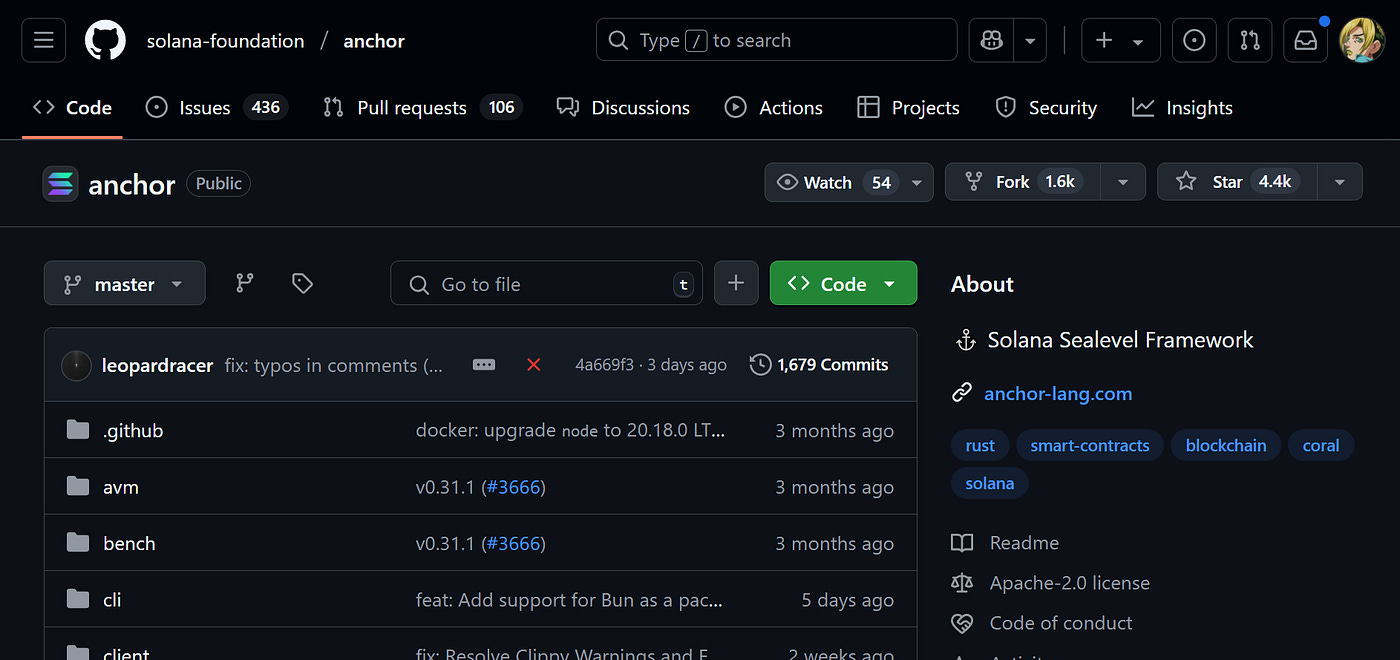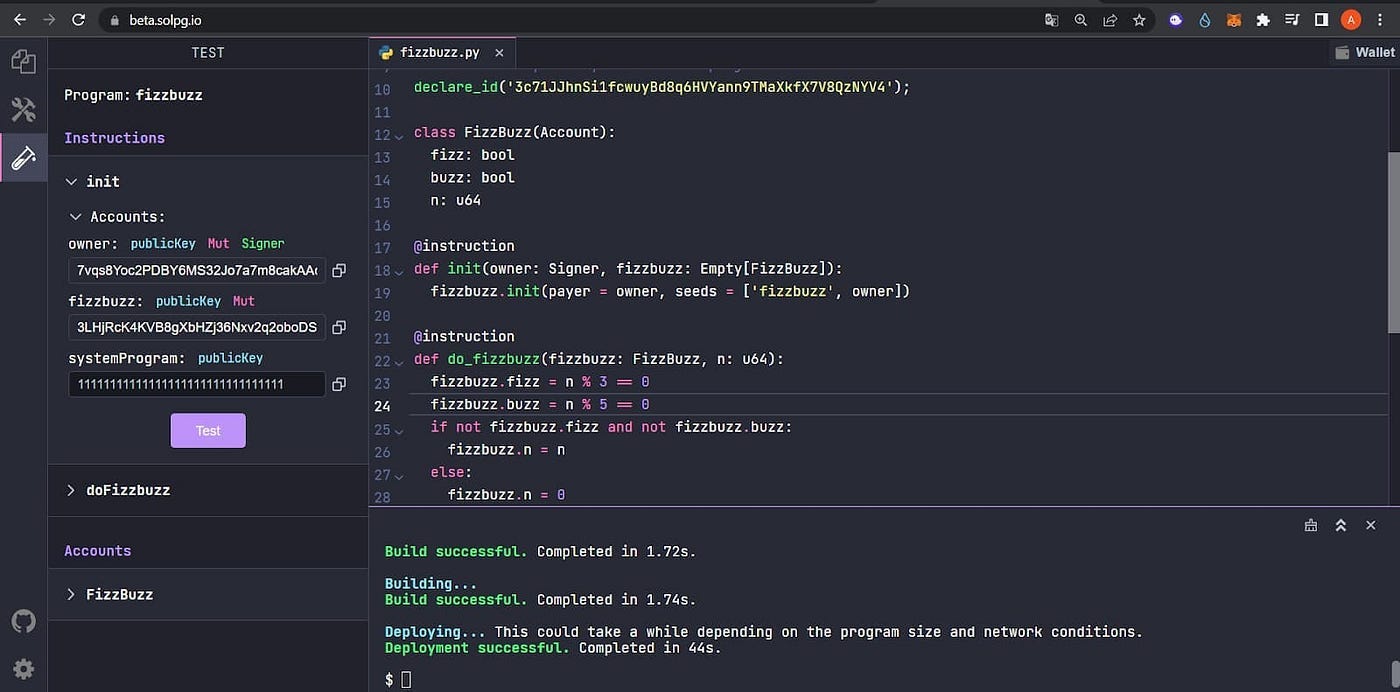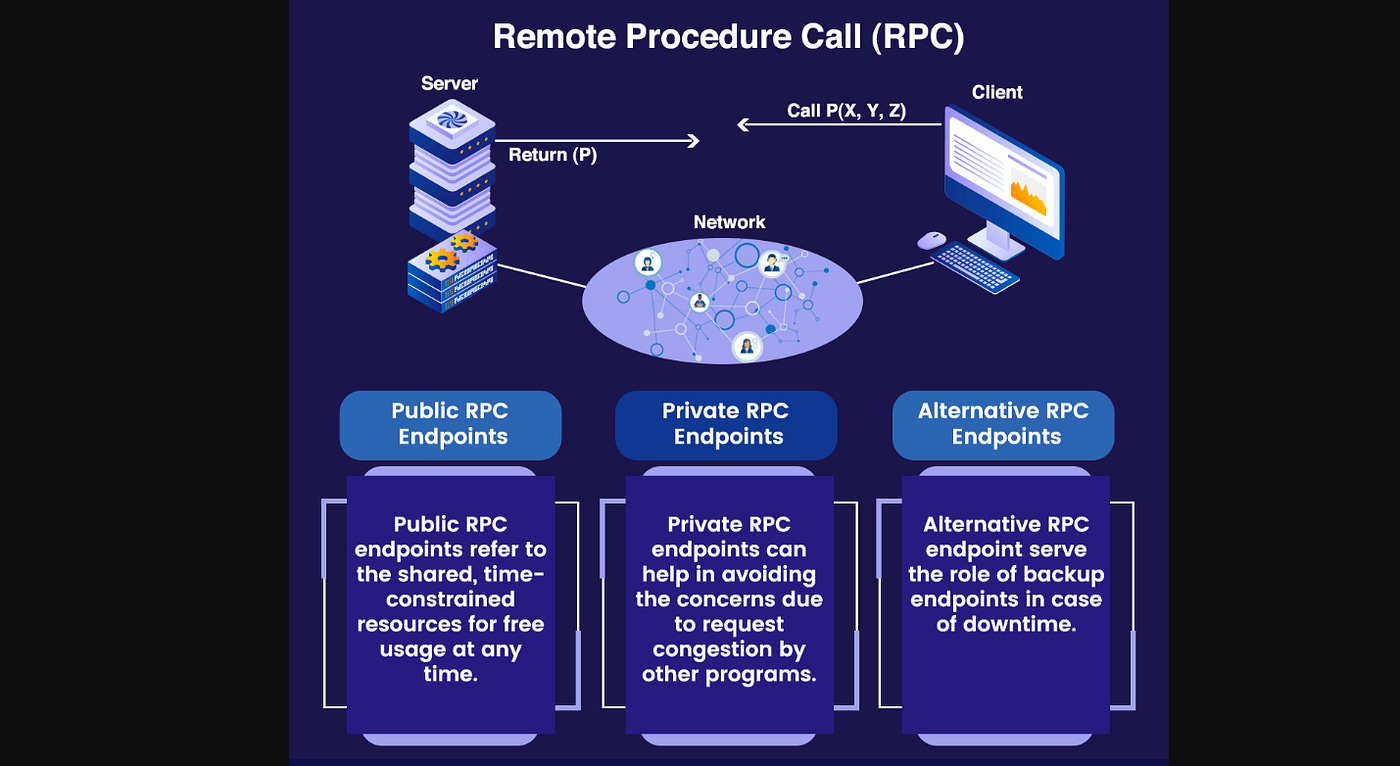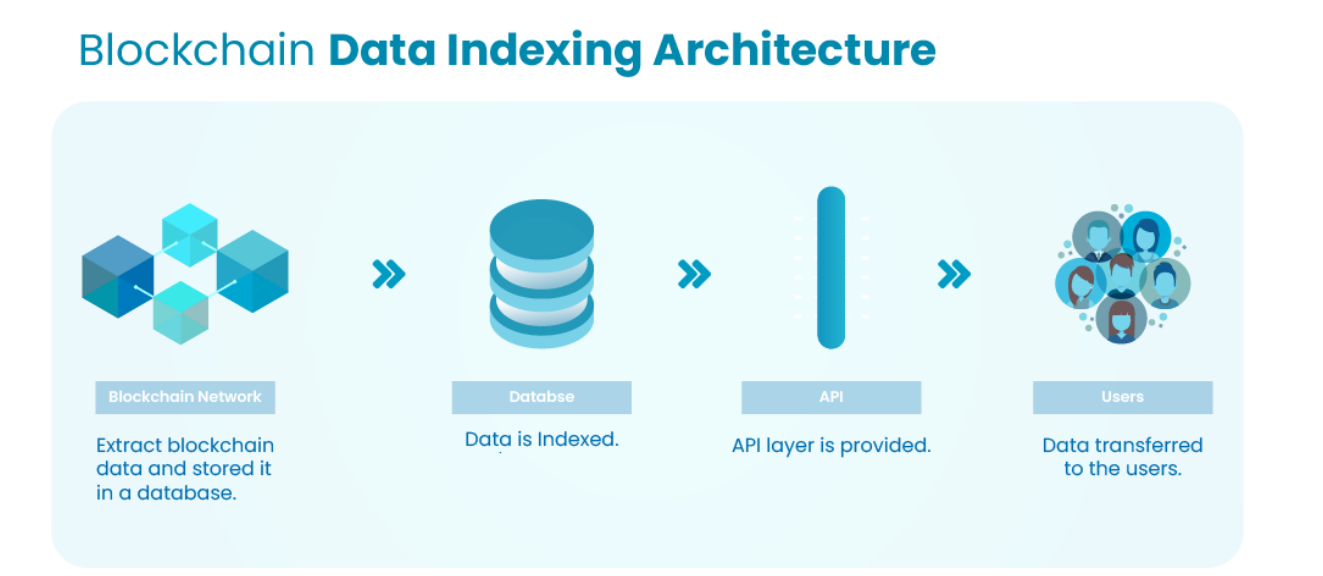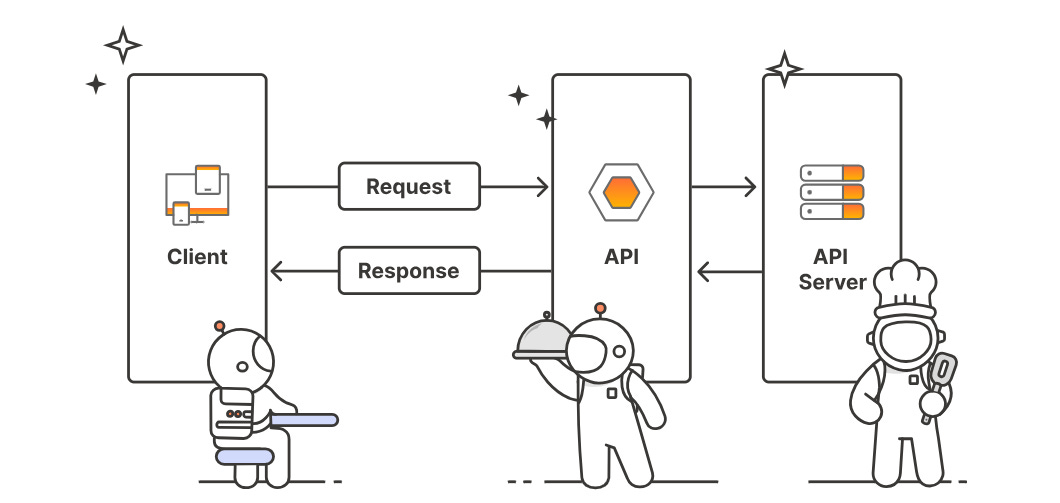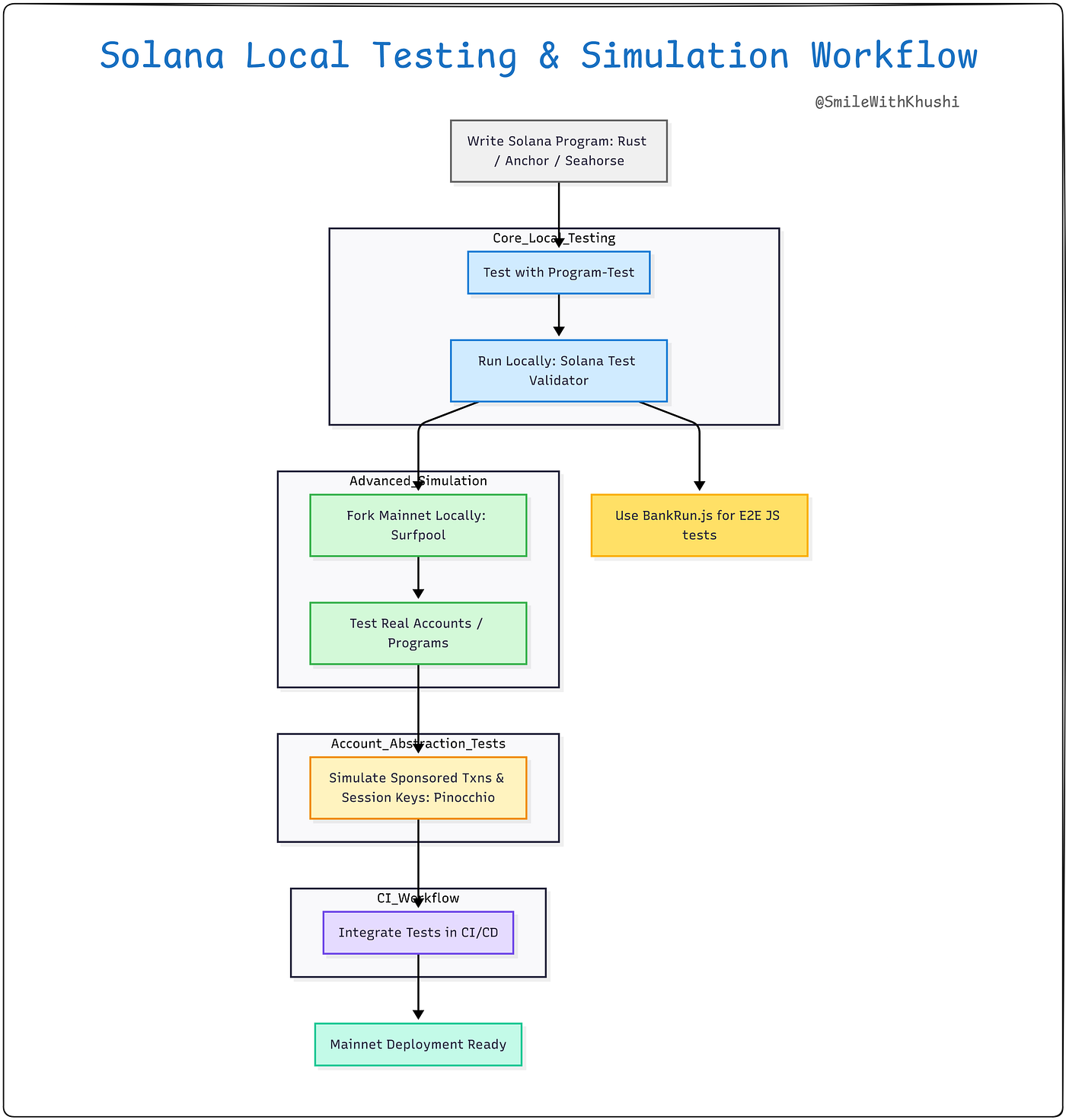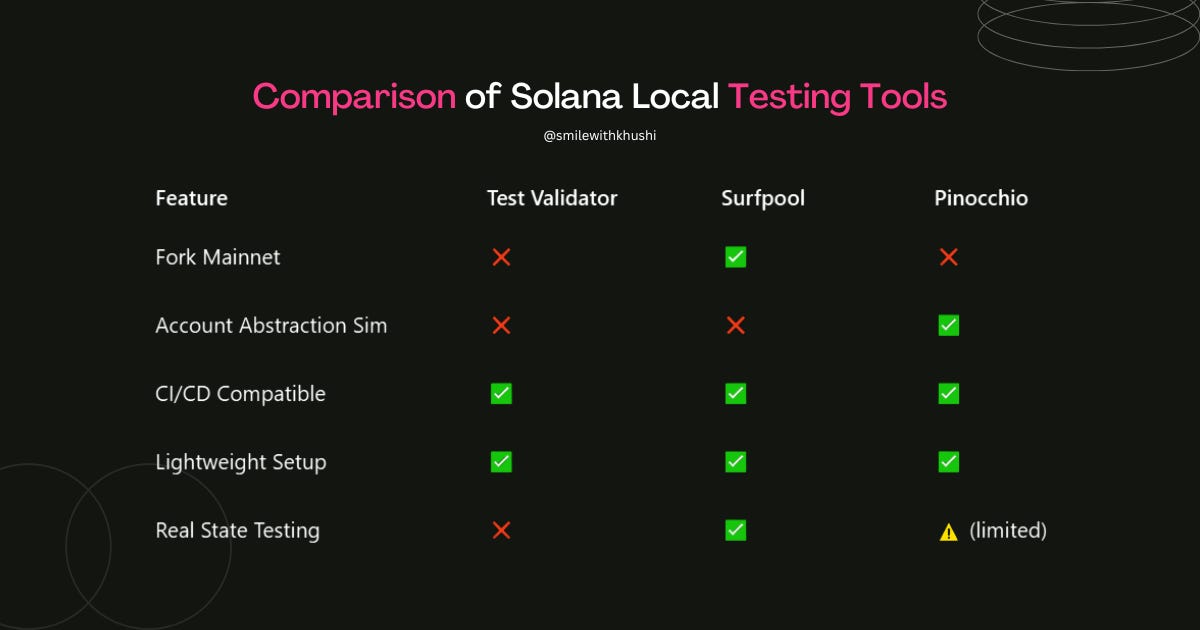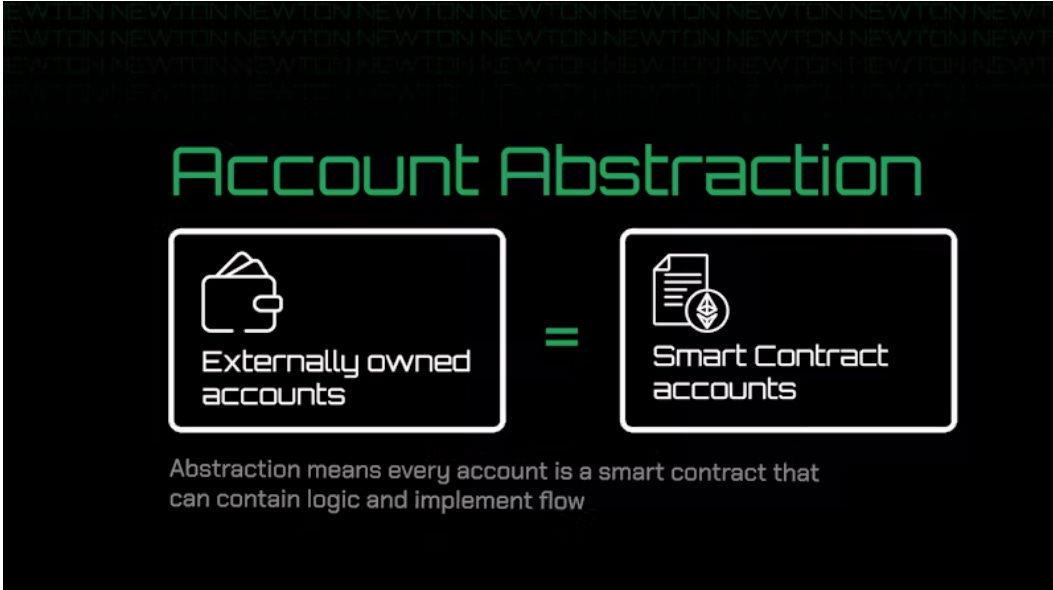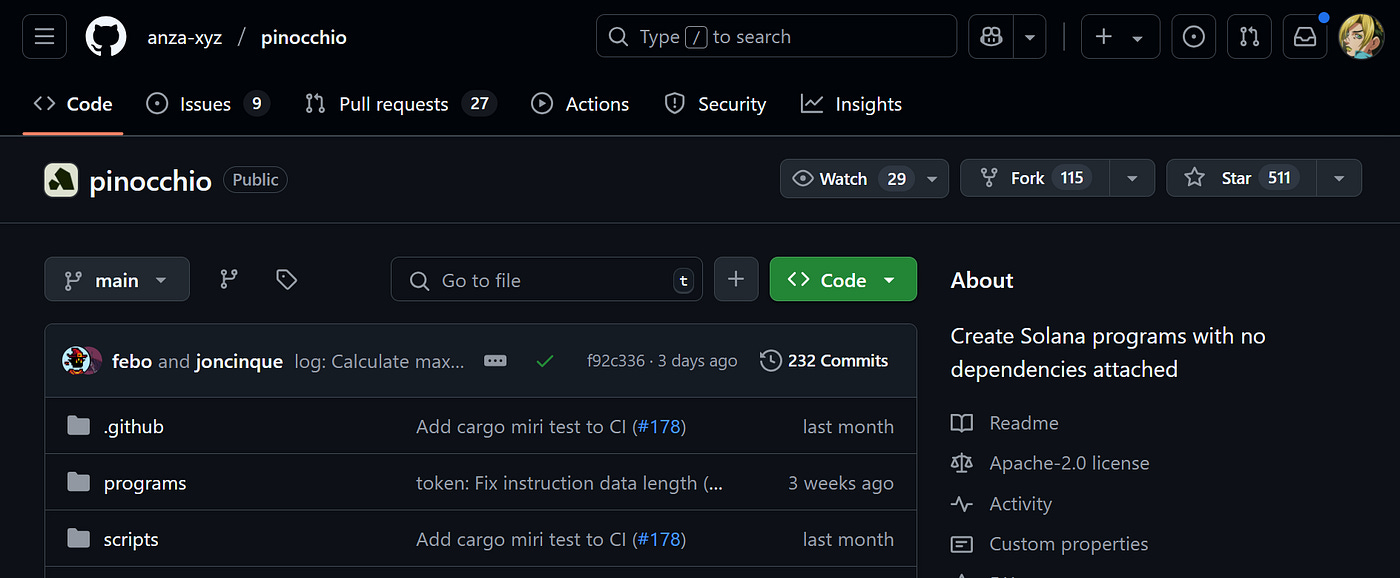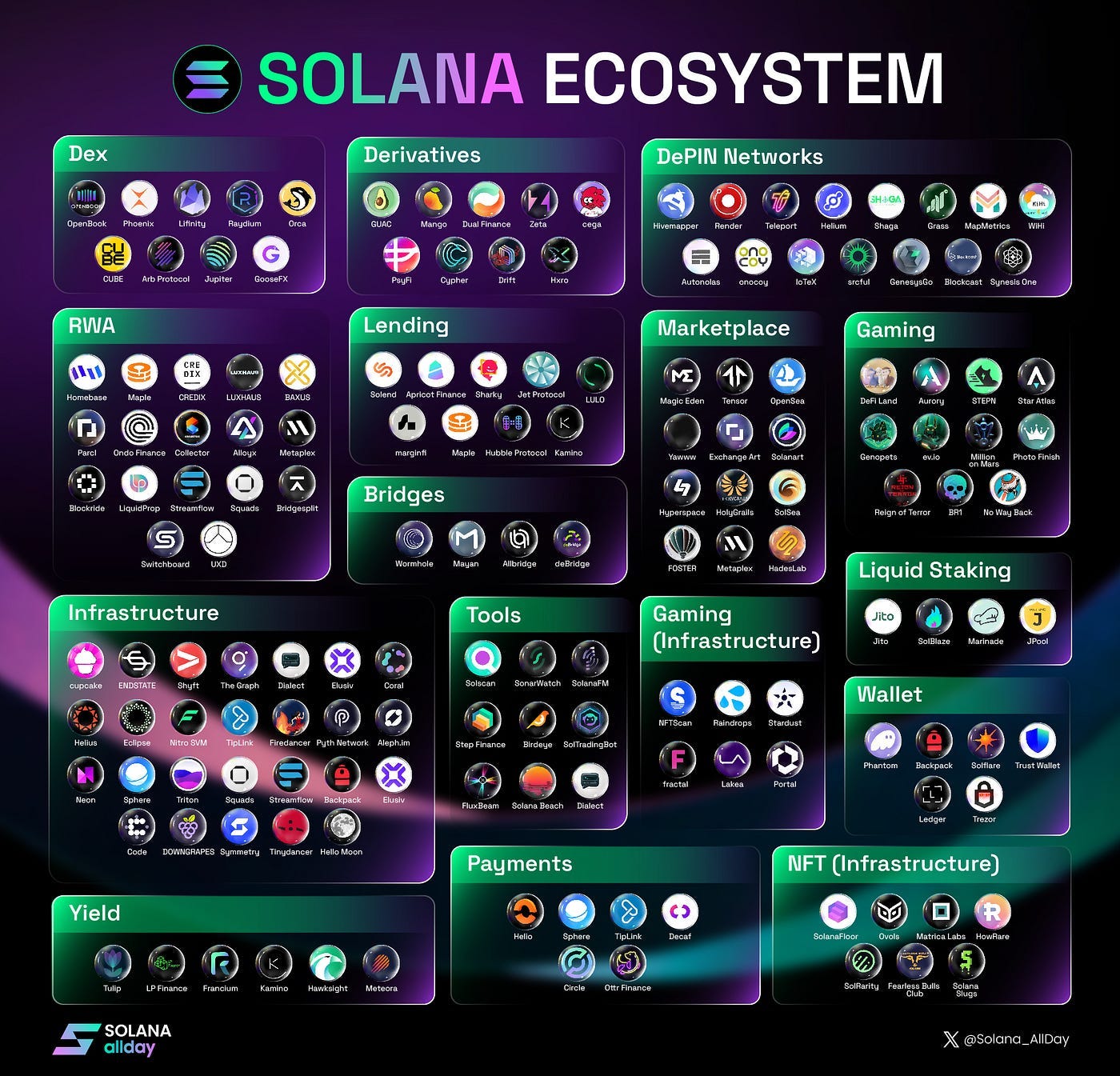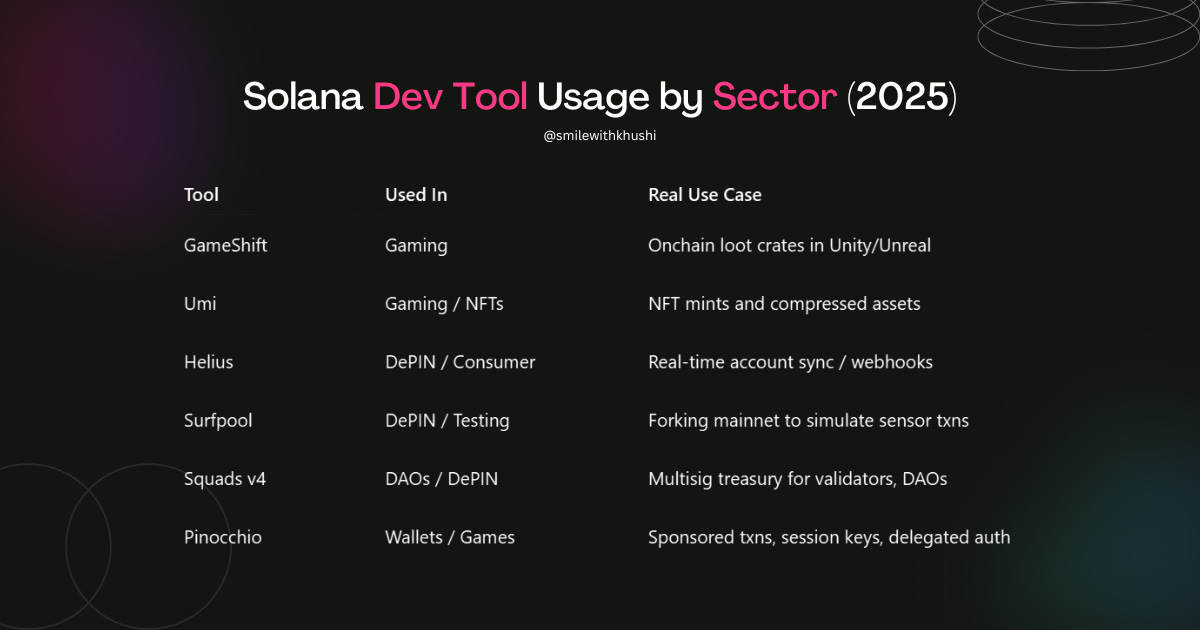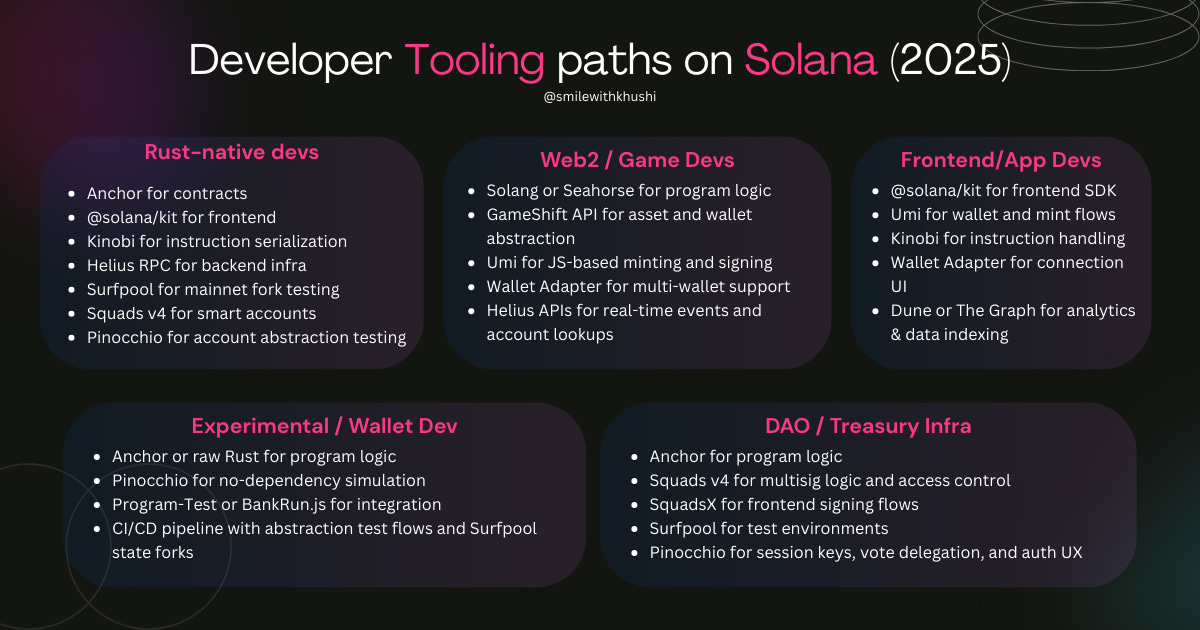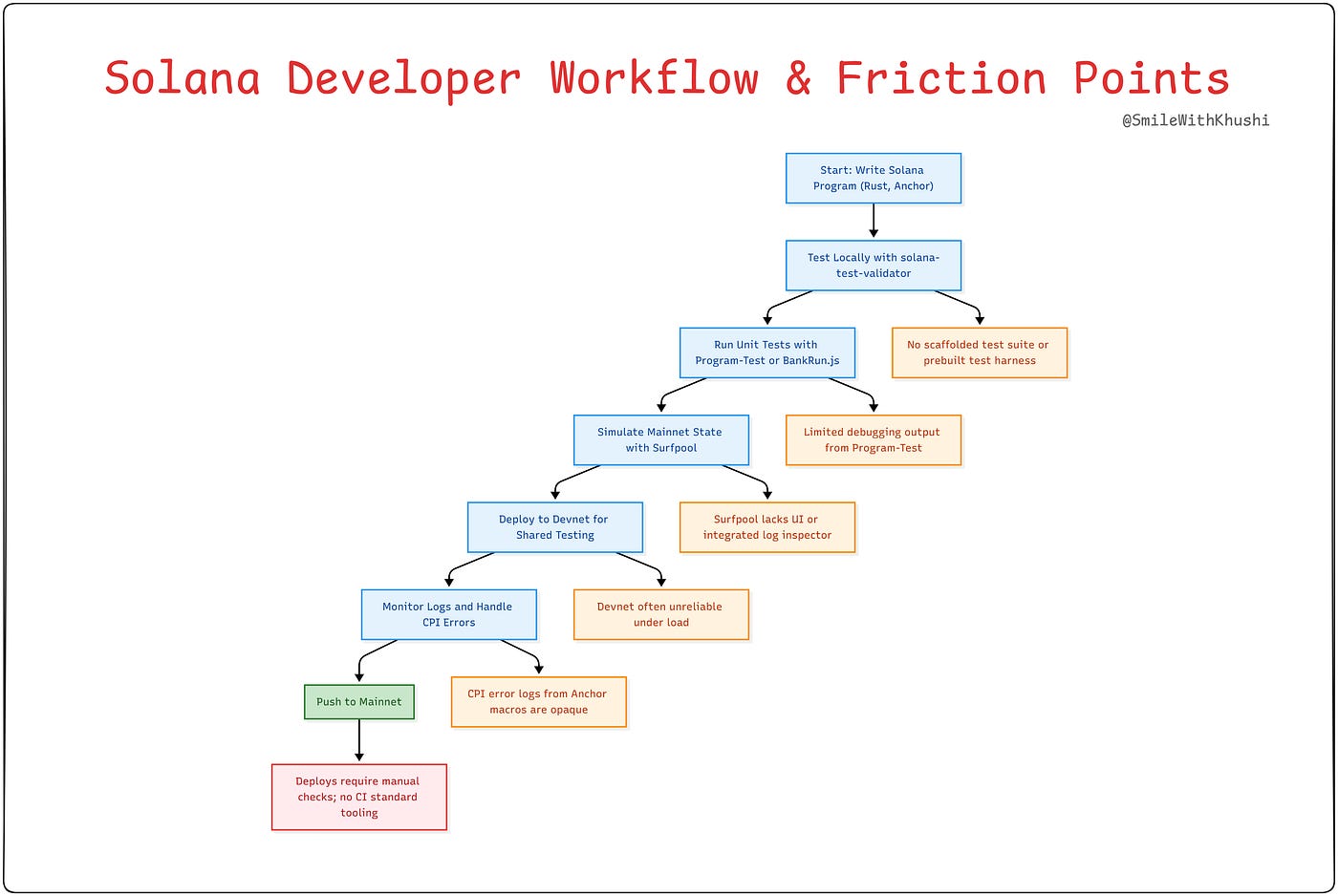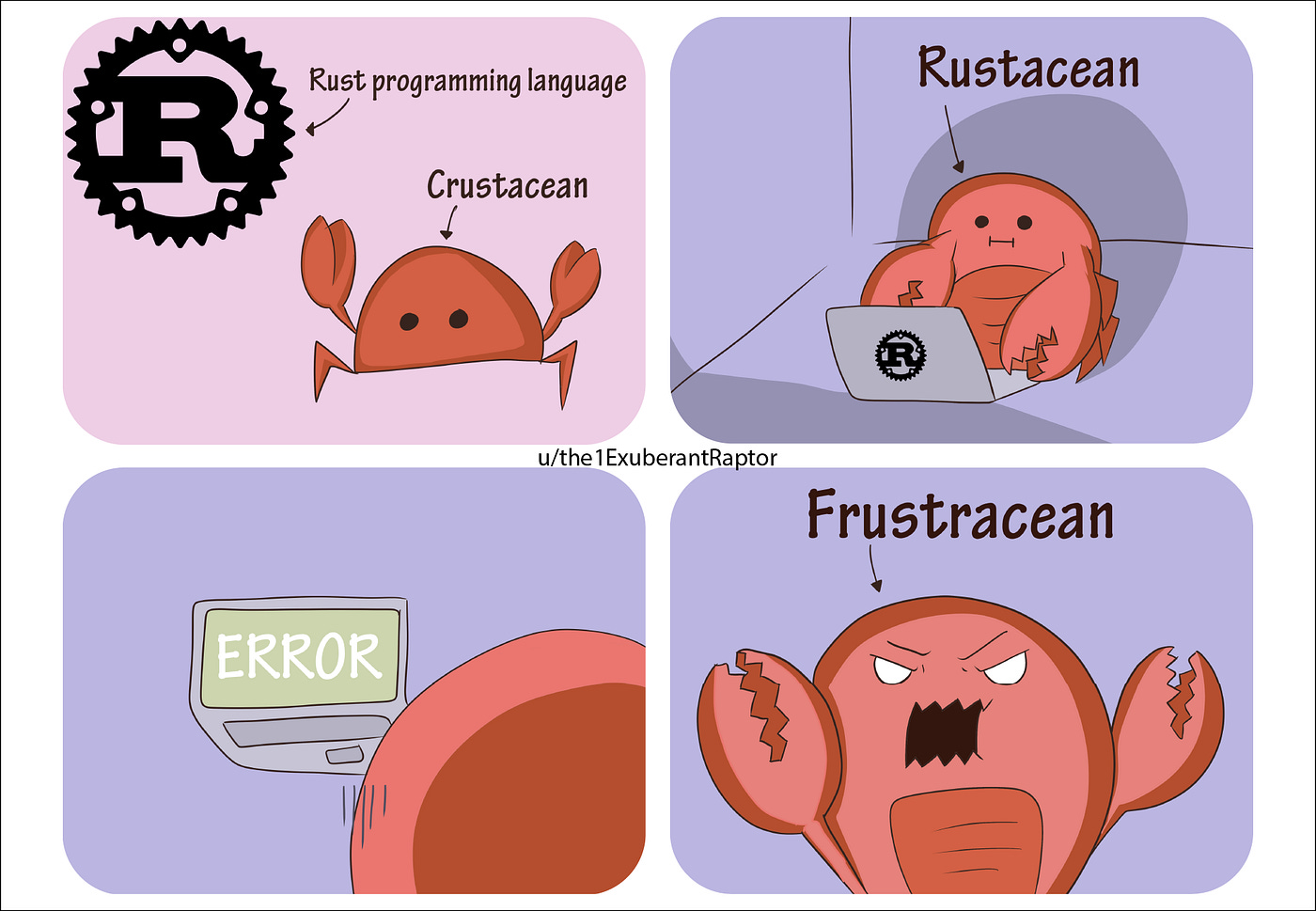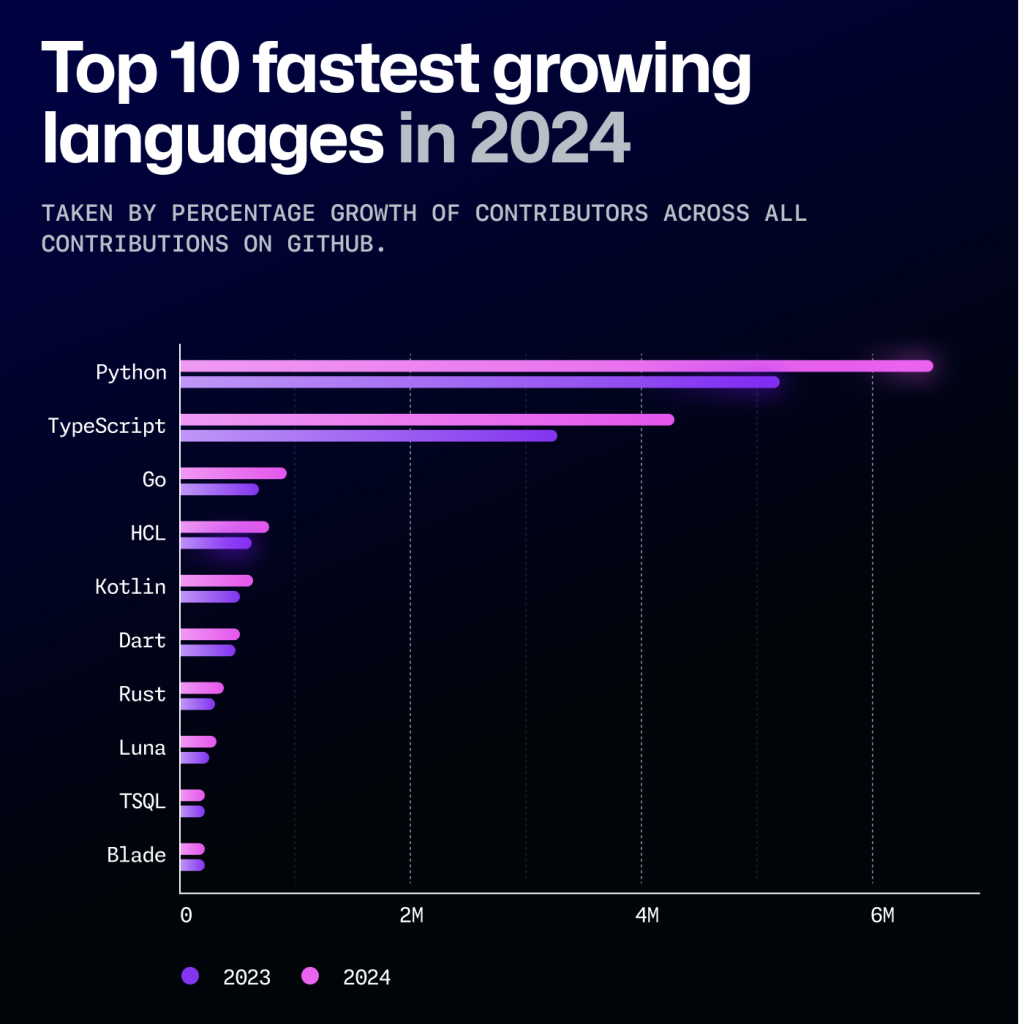Deep Dive of the State of Developer Tooling on Solana
Network Trends, Recent Updates, Ecosystem Map, Regulations, Future Opportunities and more.
Table of Contents
Introduction
Tooling Evolution on Solana
Anchor and Rust Foundations
Python and Solidity Support Offerings
Frontend SDKs and Wallet Integration
RPCs, Indexers, and Dev Infra
Local Testing and Simulation Tools
Account Abstraction and Smart Accounts
Real World Adoption (Gaming, DePIN, Consumer Apps)
Tooling Ecosystem Map
Community-Led Tooling and Grants
Limitations and Pain Points
Future Roadmap and RFPs
Conclusion
References
1. Introduction
A couple of years back, building on Solana wasn’t easy. It was fast, but there weren’t enough tools to guide you. Rust was powerful, but it was hard to learn; the documentation was scattered, and debugging was painful. If you wanted to build something, you had to push through a lot on your own.
But fast-forward to 2025, it’s a whole different vibe.
Now, you’ve got a growing list of frameworks, SDKs, and infra tools tailored to different dev styles. You can write Solana programs in Rust, Python, or even Solidity. You can simulate mainnet on your laptop, use plug-and-play SDKs for wallets and NFTs, and deploy apps with the help of battle-tested CLI kits, dev dashboards, and powerful RPCs.
And that’s showing up in the numbers, too. Solana became the #1 blockchain for new developers in 2024, with over 3,200 monthly active devs in 2025 and a retention rate above 70%.
In this deep dive, we’ll break down the full stack, including tools, infra, community, and gaps, and show why this is one of the most exciting ecosystems to build in right now!
2. The Tooling Evolution (2020–2025)
When Solana launched in 2020, it came with raw power, namely fast block times, low fees, and parallel execution. But building on it was a real grind.
The earliest tools were basic:
The Solana Command Line Interface (CLI), introduced in 2019, was the primary entry point for developers. It supported basic functions like deploying programs, generating key pairs, managing accounts, and interacting with clusters. It remains a foundational tool in the Solana dev workflow even in 2025.
The SPL Token Program, launched in 2020, enabled developers to issue fungible tokens and NFTs. It provided the core token logic but had limited customization. Developers had to work around its constraints to support complex use cases.
The game started to change with the launch of Anchor, which simplified Rust development drastically. It reduced boilerplate, added helpful macros for structure and security, and generated IDLs (Interface Description Language) for easier client integration. Anchor quickly became the de facto framework for serious Solana development.
Around this time, tools like Solana Playground (solpg) also gained traction. It was a browser-based IDE that helped devs experiment and deploy without a full local setup, especially during hackathons.
From 2022 onwards, Solana’s dev stack started opening up to non-Rust developers. Tools like Seahorse (Python) and Solang (Solidity) helped onboard devs from other ecosystems. Mucho CLI was introduced to streamline local workflows, while LamportDAO provided a web IDE, technical content, and grants to support early-stage builders.
By 2024–2025, Solana’s tooling matured into a full-stack platform. Umi and Kinobi enabled smooth frontend-to-program integration. Squads v4 brought smart account infra and multisig workflows. Tools like Helius, Surfpool, and Pinocchio tackled RPCs, local mainnet simulations, and account abstraction. Even SPL itself evolved, and Token Extensions introduced features like confidential transfers and interest-bearing tokens.
3. Anchor and Rust Foundations
If there’s one tool that truly defines how developers build on Solana, it’s Anchor.
Before Anchor, writing smart contracts in Solana meant working directly with low-level Rust. Developers had to manually handle accounts, manage serialization, set up security checks, and deal with a lot of boilerplate code.
Anchor framework changed that!
It introduced macros that automated common patterns, enforced safe coding practices, and removed much of the repetitive setup. One of its biggest contributions was generating IDLs (Interface Description Language). This was the Solana version of Ethereum’s ABI, which made building frontend integrations much simpler.
The result was better code safety, faster development, and more structured programs.
Anchor quickly became the default framework for Solana development. By 2023, most serious on-chain programs and most of the applications (DAOs to DEXs) were being built using Anchor.
Its GitHub repo today shows 4.4K+ stars and 1.6K forks, reflecting high adoption and active contribution from the dev community.
Despite the rise of Python (Seahorse) and Solidity (Solang), Anchor remains the most stable and widely-used tool for writing Solana programs in 2025. Its ecosystem is backed by strong community support, ongoing updates (e.g., LazyAccount memory optimization in 2025), and deep integration with Solana dev infra like Kinobi, Umi, and Surfpool.
That said, learning Rust is still a barrier for many & comes with a steep learning curve. Anchor makes it more manageable, but developers still need to understand Rust fundamentals like ownership, lifetimes, and borrowing.
In short, Anchor and Rust remain the gold standard for secure, production-grade smart contract development on Solana. The rest of the tooling stack is largely built around this foundation.
4. Python and Solidity Support
While Rust and Anchor remain the dominant combo for Solana development, the need for accessibility led to alternative language support — most notably Python and Solidity. These tools are still maturing, but have played a key role in onboarding new devs into the ecosystem.
4.1. Seahorse: Python for Solana
Seahorse is a framework that lets developers write Solana smart contracts in Python syntax. Under the hood, Seahorse compiles to Rust and generates Anchor-compatible artifacts, meaning you can write in Python but still tap into Anchor’s safety and structure.
This lowers the barrier for non-systems developers, especially those from data science, scripting, or full-stack backgrounds. It’s particularly useful for hackathons and rapid prototyping where speed matters more than low-level control.
However, Seahorse has some limitations:
The GitHub repo has seen low maintenance lately
Compatibility issues can arise with newer Anchor or Solana runtime updates
It’s not always suited for production-grade deployments without review or refactoring into Rust
4.2. Solang: Solidity on Solana
Solang is a Solidity compiler for Solana, allowing EVM developers to deploy smart contracts using a familiar language. It supports a large subset of Solidity syntax and maps it to Solana’s Sealevel runtime.
Use cases for Solang include:
Porting existing Solidity contracts (e.g., from Ethereum or BSC)
Onboarding Solidity-native devs without forcing them into Rust
Experiments in EVM–non-EVM cross-deployment patterns
That said, Solang’s cross-language support is still evolving:
Runtime differences between EVM and Solana require cautious design
Integration with Solana-native SDKs (e.g., Umi) is limited
Despite this, Solang is actively maintained and backed by the Solana Foundation as a long-term bridge between ecosystems.
5. Frontend SDKs and Wallet Integration
Solana’s on-chain logic is only half the story… the other half lives in the frontend!
Over the past two years, the ecosystem has seen major improvements in how developers connect users to programs through SDKs, wallet libraries, and client tooling.
5.1. @solana/kit (the successor to web3.js)
Solana’s original TypeScript SDK @solana/web3.js was widely used.
But it started to get outdated with heavy bundles, inconsistent typings, and clunky crypto support.
In 2024, Solana started migrating to a modern replacement: @solana/kit. It’s modular, tree-shakable, and way faster.
Reduces bundle size from ~90 KB to ~17–33 KB
10× faster crypto ops using browser-native BigInt and Web Crypto
Cleaner TypeScript interfaces + async iterator support
Fully extensible, supports custom transports and serialization logic
As of 2025, @solana/kit is the recommended SDK for all new dApps. The legacy web3.js v1.x is still stable, but it’s no longer being actively improved.
5.2. Wallet Adapter SDKs
Solana apps rely on external wallets like Phantom, Solflare, Backpack, and Ledger. To simplify integration, developers use Wallet Adapter, a modular TypeScript library that standardizes how wallets are detected, connected, and used across apps.
It supports:
Multiple wallets out of the box
Mobile and desktop compatibility
Custom signing workflows
Newer adapters (e.g., by Anza and Backpack) also support xNFTs and session-based interactions.
5.3. Kinobi & Umi
Kinobi helps developers serialize and deserialize instructions, accounts, and types. This reduces the chance of runtime errors from misaligned client-program logic.
Umi, built by Metaplex, is a lightweight JavaScript library designed for NFT transactions, custom signing flows, and simplified account setup. It’s especially useful for consumer-facing apps and minting flows.
Together, these tools reduce dev friction, improve wallet UX, and make Solana apps feel more like Web2 products (fast, reactive, and easy to use).
6. RPCs, Indexers, and Dev Infra
Behind every fast wallet connect, NFT mint, or token swap, there’s a layer of infrastructure moving data to and from the chain. And on Solana, that layer has gotten a lot more reliable.
6.1. RPC Providers
Every dApp talks to Solana through RPC nodes.
Remote Procedure Call (RPC) nodes are entry points that allow dApps to communicate with the Solana blockchain by submitting transactions and querying on-chain data. They’re essential for reading account state, sending transactions, and subscribing to events in real-time by forming the backbone of any live application.
In the early days, most devs used public RPCs, but they were slow, rate-limited, and failed often under load.
By 2025, that’s changed.
Helius leads the pack with fast RPCs, Solana-native APIs, real-time webhooks, and support for compressed NFTs and xNFTs. Teams like Backpack and Phantom rely on it.
QuickNode, Triton One, Alchemy, and Ankr offer managed Solana RPCs with globally distributed nodes, SLAs, and analytics dashboards.
Solana Foundation RPCs are still around, but mostly for devnet/testnet traffic.
On Solana, blocks finalize every 400ms, and programs run in parallel, so infra needs to handle thousands of txs per second. This isn’t just about speed, but about keeping your app reliable. If your RPC layer lags or drops txs, users bounce.
Most modern RPC providers now also offer real-time monitoring dashboards to track dropped txs, error rates, and performance spikes which is critical for debugging and uptime in production.
6.2. Indexers and APIs
Indexers extract and organize raw on-chain data into queryable formats by tracking accounts, logs, and transactions. They enable features like analytics, dashboards, bots, and complex data views without having to manually parse low-level Solana account structures.
APIs (Application Programming Interfaces) expose simplified endpoints for developers to interact with on-chain data or perform predefined queries without handling RPCs or indexers directly. They reduce dev overhead by offering ready-made access to tokens, NFTs, swap data, and event history by speeding up frontend and backend builds.
Solana stores program state in binary. That’s great for performance, but hard to work with directly. This is where indexers and APIs come in.
Dune decodes over 150 Solana programs, making it perfect for dashboards, bots, and metrics.
The Graph added Solana support in 2024 with Firehose integration and subgraph templates. Used heavily in DePIN and RWA projects for live state views.
Geyser Plugins stream logs and account diffs straight from validators. They’re used by explorers (e.g., SolanaFM), bots, and even games for real-time state triggers.
Moralis and Helius APIs provide plug-and-play access to token metadata, swap prices, NFT state, and more — no indexing setup needed.
These tools let you answer real product questions fast:
“What tokens did this user just mint?”
“What’s the historical price of this pool?”
“Which NFTs were transferred in the last hour?”
Infrastructure has quietly become one of Solana’s strengths. With stable RPCs, fast indexers, and production-ready APIs, devs can ship faster and sleep better.
7. Local Testing and Simulation Tools
Testing on Solana used to be chaotic. It involved devnet pushes, wasting hours on figuring out why transactions failed & debugging with raw logs. But by 2025, local testing will have caught up. You can now fork mainnet, simulate real accounts, and even test complex sponsored tx flows directly.
7.1. Solana Test Validator
Still, the first tool in every Solana dev’s setup. It spins up a single-node local cluster where you can deploy programs, reset state, and run basic integration tests. It’s perfect for fast iteration and isolated unit testing.
7.2. Surfpool
This is what you reach for when things get serious. Surfpool lets you fork mainnet on your machine by pulling in live accounts, token balances, and programs into a local simulation environment.
It matters as it lets you:
Test real-world conditions (e.g., interacting with a live DEX, DAO, or NFT mint)
Catch state-specific bugs before mainnet deployment
Run fast without needing high-end hardware
CI-friendly and can be integrated with pre-deploy pipelines
7.3. Pinocchio
Pinocchio is a zero-dependency Rust library designed for account abstraction flows — session keys, delegated signers, sponsored transactions, and more. It’s lightweight, no_std, and doesn't rely on the full Solana runtime.
It’s perfect for:
Simulating alternative signing models
Reducing binary size in custom program builds
Safe prototyping of new auth or account delegation patterns
By July 2025, over 1,200 active Solana devs have added Pinocchio into their CI test flows, especially for wallet apps, DAO frameworks, and multisig infrastructure.
7.4. Other Tools
Program-Test → Anchor-native testing framework
BankRun.js → JS-based runner for end-to-end tx testing
Bokken → Experimental Anchor debugger (under active dev)
8. Account Abstraction and Smart Accounts
Solana embraced account abstraction from the beginning, using Program Derived Addresses (PDAs). Instead of relying on private key–key-controlled accounts, PDAs allow program-driven account logic for custom behavior.
Account abstraction decouples signature checks from transaction logic. With PDAs, programs can define who can do what and when without the need for private keys to hold authority. It’s all contained in program logic, enabling smart wallets, delegated accounts, and flexible governance models.
8.1. PDAs: Core Building Blocks
PDAs are deterministic, program-owned addresses generated from seeds and a program ID. They can’t be signed by a key pair, and hence, only the owning program can authorize them.
This makes them perfect for:
Creating upgradeable program-controlled accounts
Implementing multisigs, spending rules, or access control
Building DAOs, smart wallets, and composable on-chain infra
8.2. Squads v4: Powerful Smart Account Framework
Squads v4 transformed multisig on Solana into a full-featured smart account suite.
It supports:
Time-locked execution, granular signer roles, and sub-accounts
Spending limits and program fee relayer for gasless flows
ALTs (Address Lookup Tables) for transaction size reduction
Plus, SquadsX, their multisig browser extension, makes dApps treat multisigs like any other keypair. It’s both secure and user-friendly.
8.3. Pinocchio: Lightweight Abstraction Testing
Pinocchio is a zero-dependency Rust library focused on simulating account abstraction flows, such as:
Gasless (sponsored) transactions
Session keys and delegated signers
By July 2025, 1,200+ active devs were integrating Pinocchio into their CI pipelines for robust testing. And importantly, Pinocchio remains minimal and decoupled — no declare_program! macro bindings, keeping builds lean and flexible.
9. Real-World Adoption
How Solana dev tools are powering live apps across verticals
I have noticed a pattern across ecosystems that dev tools only matter if real teams are actually using them. Solana has always been fast, but the difference in 2025 is this: projects are no longer building despite the tooling. They’re building because it exists.
The stack has matured, and real apps are now depending on it.
9.1. Gaming: GameShift API + Custom SDKs
Game devs don’t care about L1s or blockchain trilemma; they only care about UX, speed, and user retention. Solana’s fee structure helps, sure. But it’s the tooling that actually gets things built.
GameShift API strips out wallet pain and lets Unity/Unreal teams plug into onchain assets like it’s just another SDK.
Devs use Helius for real-time account state, and Umi for smooth NFT workflows.
Pinocchio handles gasless loot drops, power-ups, and off-chain-auth actions
Over 30+ live games use this today. AI-native games like Neural and fast-paced titles like Aurory and Ev.io, are built on this exact stack. Two years ago, that wasn’t possible.
9.2. DePIN: High-volume, live-data use cases
Solana might be the only chain right now that’s truly ready for DePIN-scale data through capabilities like sub-second updates, micro-txns, and millions of devices.
Helium runs entirely on Solana using Squads v4 for secure validator coordination.
Hivemapper pushes real-time GPS streams using Geyser plugins + Helius webhooks.
And most of them rely on Surfpool to test these flows against the forked mainnet state before rolling out.
9.3. Consumer Apps
Here’s where things have really clicked.
DRiP distributes millions of NFTs using compressed mints and Umi. Minting what would cost $200k on Ethereum costs less than $100 on Solana.
Their frontend stack uses Wallet Adapter, Kinobi, and a mobile-native Umi setup.
Backpack / xNFT pushes it even further by combining Anchor, Squads, and Pinocchio for app-level permissions inside wallets.
Teams like TipLink, Dialect, Gari, and dozens more are building production-ready experiences that feel invisible.
10. Tooling Ecosystem Map
Here’s how everything we’ve covered fits together, layer by layer:
Smart Contract Layer
Anchor framework for Rust is most common for powering most programs.
Seahorse (Python) compiles to Anchor-compatible Rust, preferred for prototypes/hackathons.
Solang (Solidity) lets EVM devs compile Solidity to Solana bytecode.
Language & SDK Layer
@solana/kit offers the modern, tree-shakable TypeScript SDK replacing web3.js
Umi is the JavaScript SDK optimized for NFTs and consumer flows
Kinobi offers auto-generated serializers, keeping client logic aligned with programs
Wallet Integration
Wallet Adapter offers a standardized SDK for Phantom, Solflare, Backpack, and Ledger.
Session/gasless support is driven by Pinocchio and custom logic
SquadsX offers a browser multisig signer for smart account flows
Local Dev & Testing
Solana CLI + Test Validator is a foundational local cluster
Surfpool is forked mainnet simulation tool
Program-Test, BankRun.js, and Bokken are used for unit/integration testing
Account Abstraction / Smart Accounts
PDAs are native to Solana, enabling program-owned accounts
Squads v4 offer multisig, treasuries, DAO infra, etc
Pinocchio is a zero-dependency Rust tool for session keys, sponsored txns
RPCs, Indexers & Data APIs
Helius, QuickNode, Ankr, Triton One are performant RPC providers
Dune, The Graph, Geyser Plugins for structured on-chain data
Moralis, Helius APIs for token, NFT & event metadata
Web2 Integration & Enterprise
GameShift API for plug-and-play for Unity/Unreal game studios
AWS Solana Blueprints for fast node deployment via AWS
Mobile SDKs offer Solana Mobile Stack and xNFT extensions
Community-Led Tooling & Grants
One of Solana’s biggest advantages is a builder culture that actually funds and supports developers working on the hard problems. A lot of the tools we’ve covered so far (like Mucho CLI, Surfpool, and Pinocchio) came from the community.
11.1. LamportDAO
LamportDAO is a decentralized, open developer collective focused on funding public goods in the Solana ecosystem.
Offers microgrants up to $5,000 for developer tooling, public infra, educational content, and protocol improvements
Acts as a signal amplifier, where projects often get recommended to the Solana Foundation for larger milestone-based grants
Runs a community-maintained IDE, hosts hackathons, and coordinates contributor bounties via Discord and GitHub
11.2. Superteam
Superteam is another key player with a network of regional DAOs (India, Vietnam, Germany, Nigeria, etc.) offering:
Quick grants (< $10k) for early-stage ideas
Bounties and workshops on wallets, Solana CLI, and dev onboarding
Local events that connect builders to mentors, capital, and fellow contributors
11.3. Solana Foundation
The Solana Foundation runs a structured grant program focused on:
Milestone-based funding for core tools, infrastructure, and dev onboarding
Convertible grants for commercial projects working on open dev infra
RFPs (Requests for Proposals) for things like:
I. Formal verification tools
ii. Mobile-first SDKs
iii. Native ZK integration
iv. Secure dependency managers and CI tooling
12. Limitations and Pain Points
The ecosystem is growing, tools are shipping, and teams are getting funded. But under all the progress, there are still real gaps in the developer experience, especially when things don’t go right.
Here’s where the cracks still show up for many builders.
12.1 Debugging remains a pain point
Building on Solana has become smoother, but debugging is still one of the weakest links.
Anchor macro errors can be opaque and hard to trace
When CPI (cross-program invocations) fail, logs aren’t always clear
There’s no visual debugger or instruction-level trace explorer
12.2. Language support is uneven
Solana has taken big steps toward multi-language access, but only Rust feels truly production-ready.
Seahorse (Python) isn’t actively maintained and breaks with recent Anchor upgrades.
Solang (Solidity) is improving but lacks mature tooling and ecosystem integrations.
Devs using these tools often hit compatibility walls when deploying to mainnet or integrating with clients.
12.3. Documentation is still fragmented
Solana’s rapid development pace has outgrown its docs in several areas.
Token Extensions, Kinobi, Surfpool, and newer SDKs often have incomplete or outdated guides
Best practices are buried in GitHub issues, Discord, or private gists
Developers have to piece together usage patterns from scattered sources
12.4. Dev UX
Even with solid infra, building a full product on Solana often requires assembling pieces manually.
No first-party CLI to scaffold programs + frontend + Surfpool + CI
Limited visual tools for contract simulation or account layout
CI/CD best practices are still being figured out, team by team
13. Future Roadmap and RFP Opportunities
By now, Solana’s dev stack covers most of what a team needs to ship. But under the surface, there are still meaningful gap,s especially around dev experience, multi-language support, CI testing, and mobile workflows.
Here’s what’s next for builders looking to make an impact.
13.1. Debugging Tools
Debugging Solana programs, especially CPI-heavy flows, still lacks dedicated tooling.
Anchor error logs are opaque and difficult to trace
CPI failures often show just the failed instruction, not the full path
Local environments like Surfpool help simulate, but don’t explain
Hence, there’s a need for Instruction-level CPI debuggers, log visualizers for Anchor, and tools that track account diffs across transactions.
13.2. Python Tooling Revival
Seahorse (Python-to-Solana transpiler) gave non-Rust devs a solid entry point, but it’s currently unmaintained and incompatible with modern Anchor versions. Solang (Solidity) exists but is still underused due to a lack of deep tooling integration.
There’s a need for a stable Seahorse 2.0, with Anchor macro compatibility, client IDL generation, and test runner integration, or a Python-native toolchain from scratch.
13.3. Formal Testing and CI Tooling
Most Solana teams still patch together CI pipelines manually.
No standard templates for Surfpool-based tests
Formal verification workflows (e.g., RiscZero-style provable correctness) are absent.
Hard to simulate real user flows end-to-end.
Hence, CI templates with Surfpool forks, snapshot testing for account state, and portable security testing pipelines for Solana programsares needed.
13.4. Mobile-First SDKs + Dev Infra
Saga and xNFTs have moved Solana ahead in mobile adoption. But from a dev tooling perspective, there’s friction.
Wallet adapters exist, but no mobile-specific CI or test flows
No SDKs for mobile-native minting, compressed NFTs, or smart account flows
Few reusable templates for launching mobile dApps
Hence, there’s a possible need for React Native modules for Solana actions, mobile dev CI support, and AppKit tooling to test txns in local simulators.
14. Conclusion
Building on Solana in 2021 meant learning Rust, writing boilerplate manually, and debugging CPI errors with println! statements and Discord threads. There were no structured testing environments, no proper client-side serializers, and no local mainnet forks.
That’s no longer the case.
By mid-2025, Solana’s dev tooling has matured into a layered stack. Anchor remains the dominant contract framework, but now sits alongside tools like Kinobi, Umi, Surfpool, and Pinocchio. These purpose-built tools were designed to handle the specific complexities of Solana’s runtime model.
On the client side, Wallet Adapter and @solana/kit provide standardized flows. For testing, Surfpool and Program-Test offer real environments with better fidelity. Smart accounts are being built using Squads, PDAs, and custom auth logic that’s live in production.
If you’re looking to contribute meaningfully to Solana’s ecosystem, this is where the impact is:
Better abstraction and dev ergonomics
Testing and formal assurance
Multi-language support and onboarding
Mobile-native development environments
The foundation is solid. What’s needed now is refinement.


